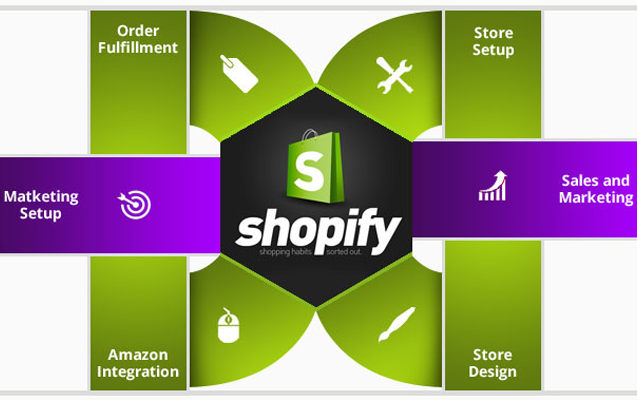 As the e-commerce environment constantly develops, Shopify has become one of the primary platforms that allow businesses to set up and run their online stores. With more than a million businesses operating on Shopify, the pressure for custom applications that can enhance the functions of the shop reaches an all-time high. Shopify app development provides ample opportunities for businesses to include integrations easily, provide users with a pleasant experience, and mechanize complicated processes. This has prompted us to compile this guide on Shopify app development, down to the hardcore essentials to help you create robust solutions that will boost e-commerce success.
As the e-commerce environment constantly develops, Shopify has become one of the primary platforms that allow businesses to set up and run their online stores. With more than a million businesses operating on Shopify, the pressure for custom applications that can enhance the functions of the shop reaches an all-time high. Shopify app development provides ample opportunities for businesses to include integrations easily, provide users with a pleasant experience, and mechanize complicated processes. This has prompted us to compile this guide on Shopify app development, down to the hardcore essentials to help you create robust solutions that will boost e-commerce success.
Why develop a Shopify app?
Shopify apps extend the platform with new features, automate workflows, and drum up greater performance in the stores. Because of this, both businesses and developers have developed the following to code an app for Shopify:
- The delivery of personalized solutions to merchant requirements.
- Enhancing a store's abilities by offering unique features.
- Automating the proposed workflows for efficiency and productivity.
- Integrating payment gateways, shipping companies, and other service providers.
- Generating revenue through paid apps on the Shopify App Store.
Types of Shopify Apps
There are basically three types of apps that Shopify supports:
- Public Apps - Those available on the Shopify App Store, available to multiple merchants.
- Custom Apps - An app that was designed to serve a specific store and hence, does not feature on the Shopify App Store.
- Private Apps - Developed for a single store with its unique functions and business requirements.
Key Technologies for Shopify App Development
Various technologies come into play while developers develop a solid Shopify app like this:
- Shopify API: REST and GraphQL APIs to interact with store data.
- Shopify Polaris: A design system to create consistent user-friendly interfaces.
- Shopify CLI: Command-line development and management application for Shopify apps.
- Webhooks: For real-time updates and event-driven interactions.
- Liquid: The templating language that Shopify uses for themes and customization.
- Node.js, React, and Ruby on Rails: Used quite a lot for the development of Shopify apps.
Steps in developing a Shopify app
1) Plan your app idea
Identify a gap in the Shopify ecosystem and define the problem your app will solve. Conduct market research and analysis on competitor apps to create a unique selling proposition.
2) Set up a Shopify Partner account
To access the Shopify Developer Dashboard, API documentation, and testing environments, sign up for a Shopify Partner account.
3) Choose your tech stack
Select the most suitable programming language and frameworks for the application according to their functionality and scalability.
4) Develop the application
- Use the Shopify CLI to create the app skeleton.
- Authenticate yourself using OAuth to access the data in that store.
- Implement the necessary APIs to fetch, update, and manage store data.
- Design a responsive and user-friendly UI using Shopify Polaris.
5) Test your application
Use Shopify's development store and API testing tools to check for bugs, performance issues, and compatibility with different Shopify plans.
6) Submit to Shopify app store (if public app)
Follow submission guidelines that involve app listing optimization and a few security checks to get an approval listing on the Shopify App Store.
Seven best practices in Shopify app development
- Go for Performance: Ensure fast page loading and low latency on your whole store.
- Optimize for mobile: Responsive design to meet the needs of mobile users.
- Employ Strong Security Measures: Secure authentication and encryption of any data.
- Be available to provide Excellent Support: Write comprehensive documentation for this app and develop a support system for solving user problems.
- Continual Improvements: Regularly update the app with new features and fixes to bugs.
Conclusion
Shopify app development is an exciting business prospect for those who want to spice up the e-commerce experience. If you build a public app and want to publish it on the Shopify App Store or want to create the app for a specific merchant, the better you understand the process of Shopify app development as much as best practices, the better it will be for you.
Comments on “Shopify App Development: A Complete Guide to Building Powerful E-commerce Solutions”